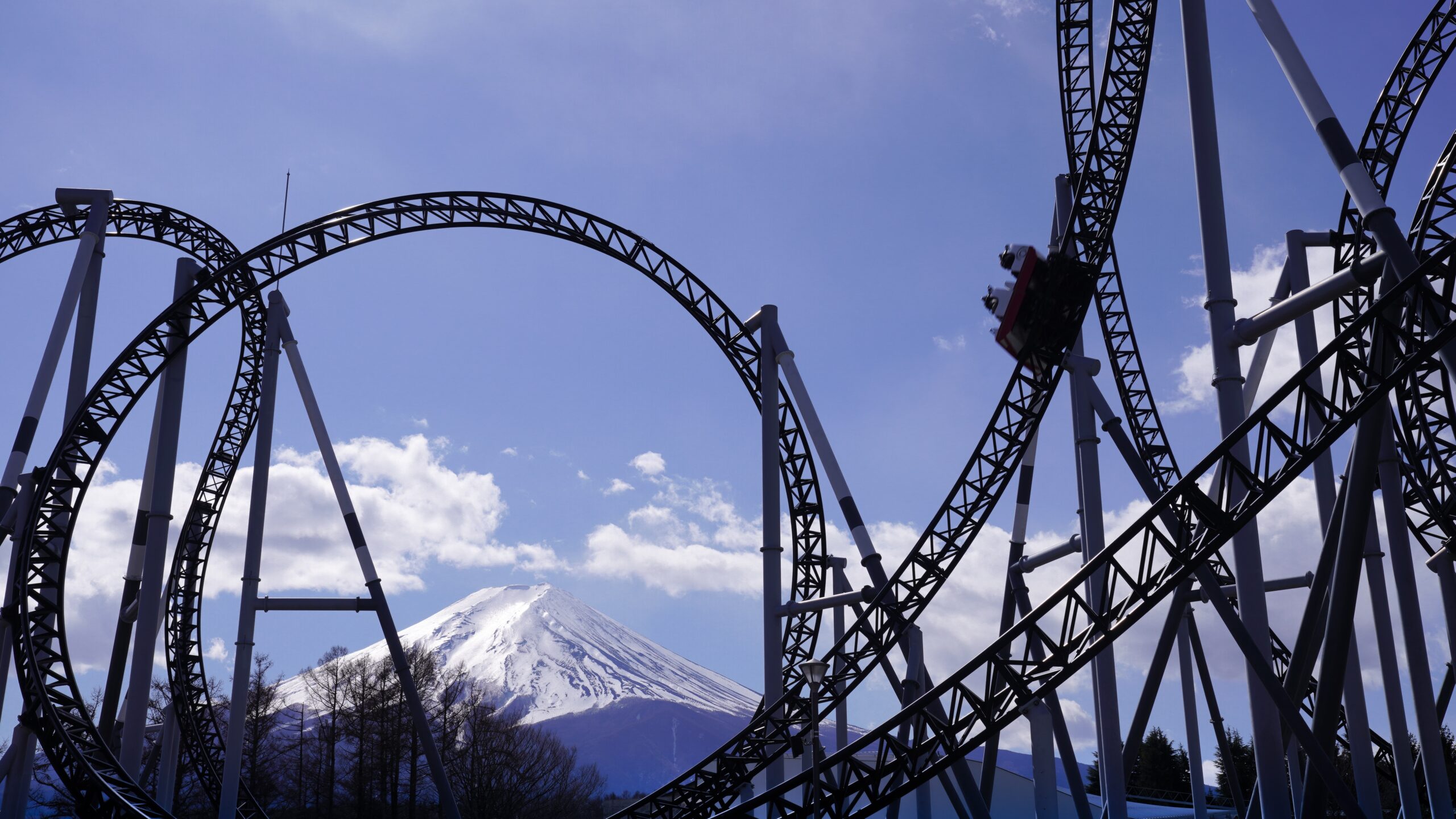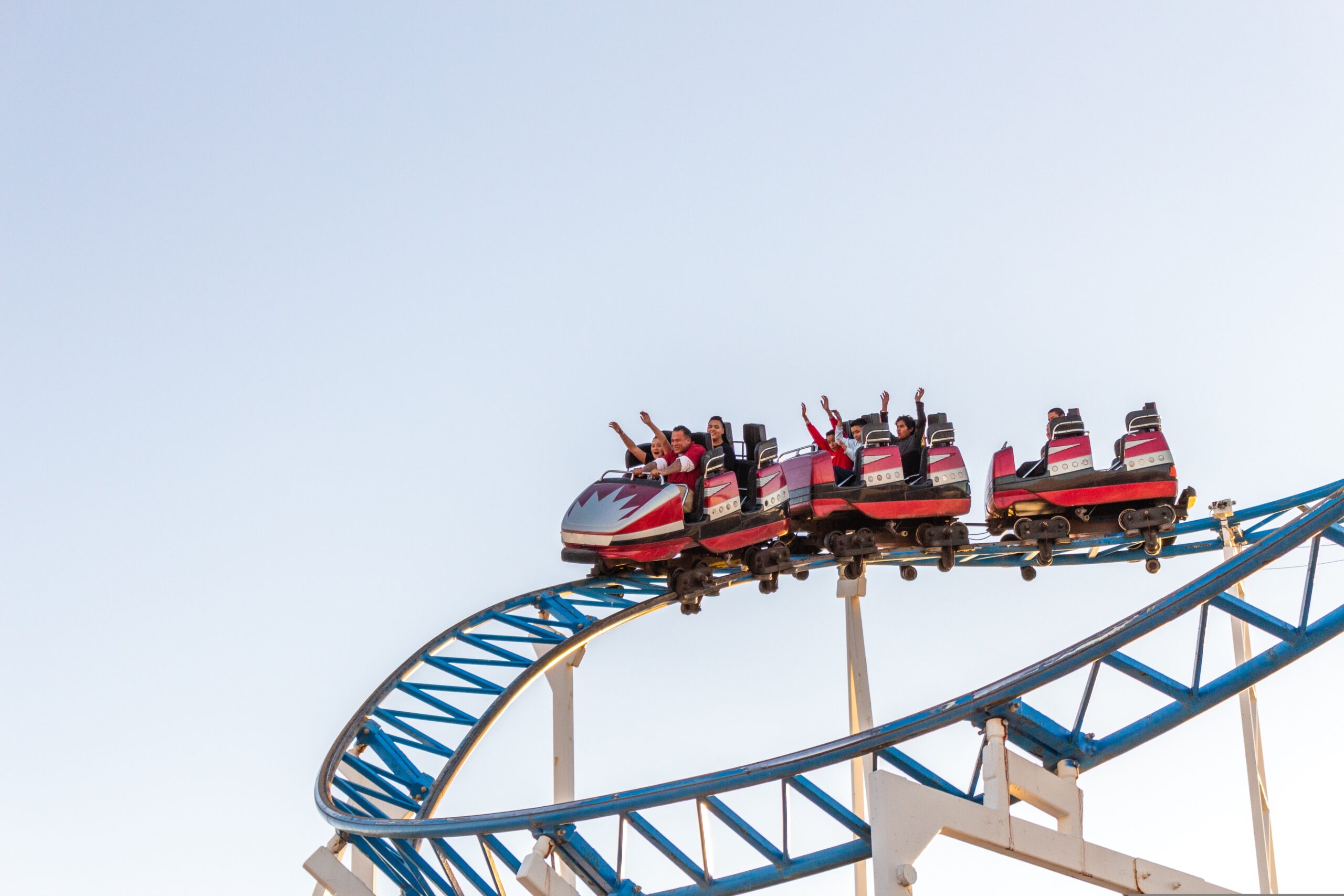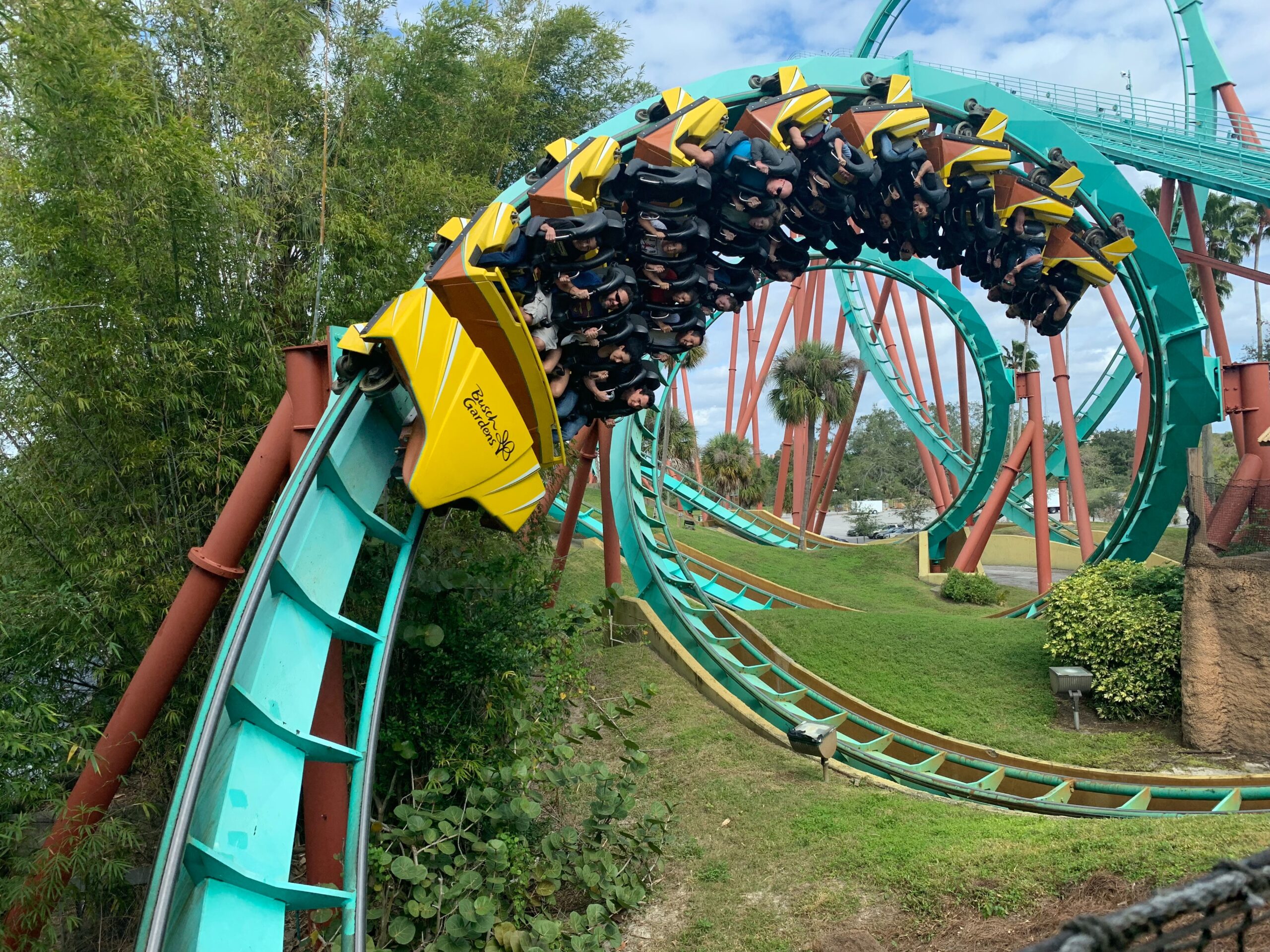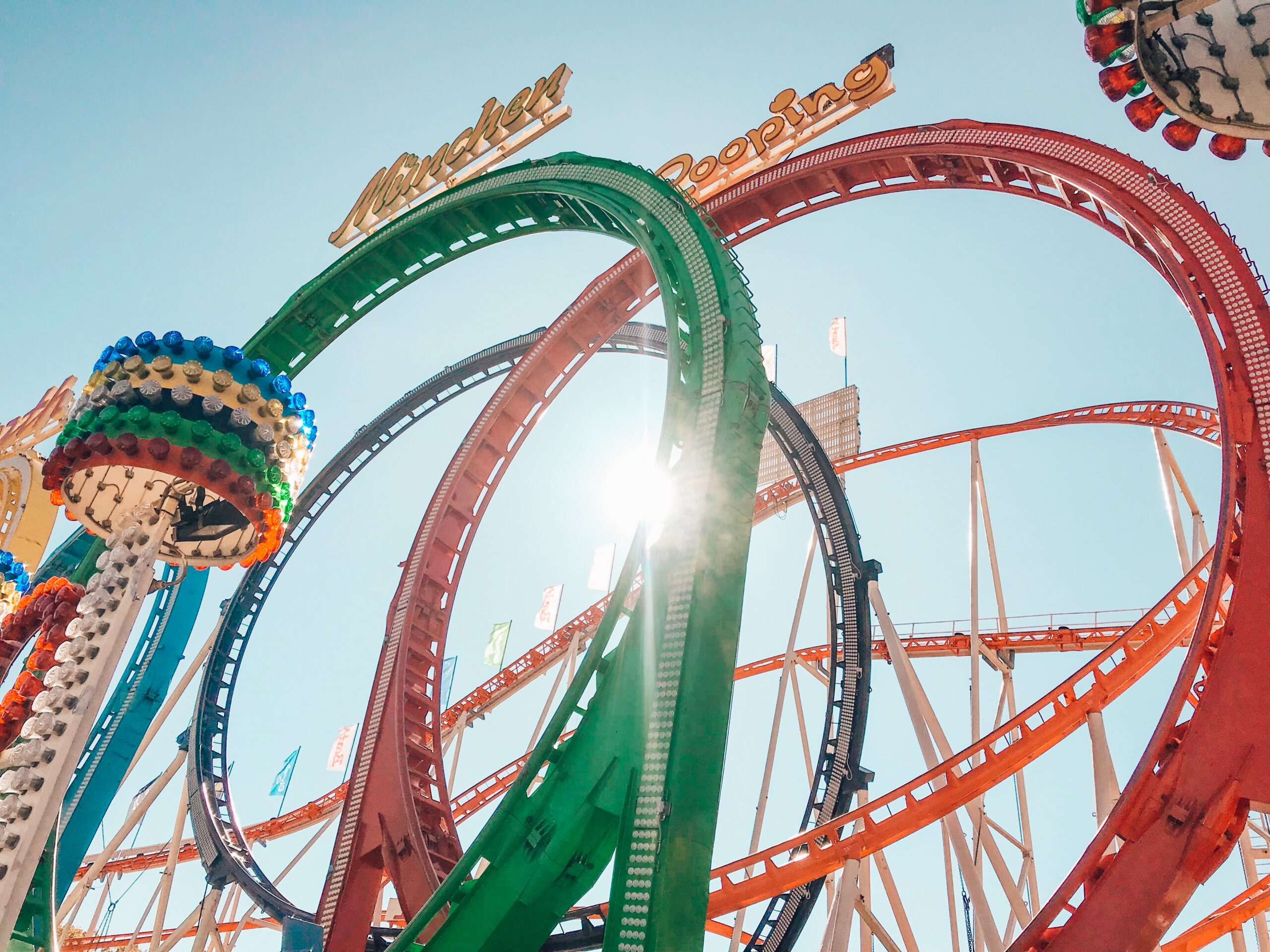You, like the majority of people, enjoy carnival attractions and roller coasters. The enthusiasm of the crowd, the chilling cries of the current riders, and the eagerness to compete in another round are remarkable. There is only one issue. Each time you indulge in one of these dizzying attractions, the effects last for hours or days. Although the battle may appear hopeless, have no concern! This post will explain how to combat the dizziness that even the most enjoyable attractions can cause if not properly addressed and prepared for.
Why Do You Feel Throwing Up After Riding a Roller Coaster
Numerous healthy individuals are able to ride thrill attractions without issue, while others are adversely affected in a way that is unpleasant and causes long-lasting distress. The numerous bodily fluids are one of the most influential factors in this regard. If you shake a gallon jug of milk or water like a roller coaster, you will observe how heavy the liquid is, how it almost violently resists direction changes, and how it continues to move briefly after you stop shaking it before settling down. This is because of inertia.
There is one liquid in the ear. Similar to a carpenter’s level, the inner ear contains fluid-filled canals that aid in maintaining a sense of balance and orientation.
Using a bubble oriented between two lines, a carpenter’s level indicates whether a surface is flat or inclined. However, the visual system helps the brain orient us in our surroundings. The vestibular system is capable of detecting both circular and linear motion. This includes routine activities like halting, starting, and turning. The sensory system monitors the tension and movement of our muscles and joints. It also monitors our body’s position relative to the ground. The brain receives signals from all of these systems and processes the gathered data to generate a sense of stability.
The vestibular system’s tubes and sacs are full with fluid. This fluid moves when the cranium is moved. Additionally, the vestibular system includes specialized sensory cells. The fluid movement causes these sensory cells to bend. This alteration produces an electrical signal that is conveyed to the brain via a nerve for interpretation.
This vestibular system of circular canals within the inner ear resembles a roller coaster, with the canals situated at varying angles like the tubes on a carpenter’s level.
The fluid in your inner ear is capable of detecting human-sized changes in position and angle, but it can be tricked by the extreme forces of an adrenaline ride. If you vigorously jostle a carpenter’s level, it will take some time for the liquid to settle and reform the single bubble that provides an accurate measurement of surface orientation.
Similarly, if you spin your office chair in a circle for an extended period of time, the fluid in your inner ear will also swirl and send signals to your brain about how to maintain your balance while rotating. If you halt abruptly without decelerating, the fluid in your ear canals, which was spinning along with you, will continue to move for a slightly longer period of time due to inertia. Because the still-moving fluid is transmitting erroneous signals to your brain, your eyes may attempt to track a bit to the side in the direction of rotation. This sensory disconnect between what the eyes see and what the vestibular system reports is the cause of vertigo.
Some people can quickly recover from vertigo, while others cannot and may feel disoriented, queasy, or even vomit. Any significant disconnect between vision and the vestibular balance system can cause unease; this is why some people get seasick on ships, car sick in cars, and cannot wear VR goggles for long periods of time – the disconnect between perceived motion and actual motion becomes too overwhelming for the brain to process.
The second liquid that impacts the body is blood. Some gravitational forces on a roller coaster, such as in the bottom valley after a hill, are intense enough to pull enough blood away from the brain to cause a momentary feeling of dizziness or even temporary loss of consciousness. This type of large-scale blood pressure change in the body can be exhilarating for some, nauseating for others, and potentially life-threatening in extreme cases. This is why all thrill attractions have warnings recommending that riders be in good health.
Additionally, there is the sludge in your intestines. This includes partially digested food and gastric acids, which are present in varying quantities based on the time elapsed since the last meal. When a person rides a roller coaster and experiences abrupt turns and loops as well as unusual gravitational forces, a large amount of liquid sloshing around inside the stomach can be extremely unpleasant. The nerves in your stomach are designed to detect when the stomach is overfull or in distress. These initiate a safety reflex in the body, which determines that the stomach’s contents are acting abnormally and must be expelled as soon as possible.
Cue vomiting during the ride or immediately afterward.
Tips to Remember to Prevent Throwing Up in a Roller Coaster Ride
Everything Is in the Head
When experiencing motion sickness, the brain receives conflicting signals from various organs in the body, causing a physical response. This includes our hearing and vision. Because our bodies naturally defend against perceived threats and poisons, if our body feeling does not match our perceived body feeling, our body enters detox mode to eliminate the contaminants, which in this case is motion.
To assist with this, avoid closing your eyes during the voyage. Observing the twists and turns you are experiencing may be frightening, but it will help your body understand why you are moving so quickly.
Consider Before Leaping
If you experience these types of motion sickness symptoms, it is essential to research which attractions you should avoid and which are acceptable. In general, attractions that sway and spin are more likely to cause bodily distress, whereas roller coasters give you sufficient time to react to the situation. If the roller coaster lacks numerous inverted loops, you should be fine to board.
Eat Before Riding
While it may seem counterintuitive to consume before a ride that can throw your body (and food) around, it is essential to have food in your system for rides that cause motion sickness. Obviously, we do not recommend eating a massive meal and then promptly riding the teacups, but small, proportionate snacks 30 minutes prior to the ride will help alleviate these symptoms.
Additionally, avoiding fiery and acidic foods and consuming nausea-reducing foods such as ginger can aid in preventing motion sickness.
Keep Your Head Level
To combat the dizziness that these rides may induce, consider sitting with good posture, with your head aligned with your shoulders and spine. Your brain can become misaligned when you tilt your head, leading to the conflicting messages you are attempting to avoid.
In addition to maintaining proper posture, sitting in the middle row of the vehicle will facilitate the smoothest journey. As the viewer, the front can be more disorienting, whereas the rear is the most intense location to sit.
Prepare Anti-Nausea Medication Stocks
If none of these tactics work, and you leave the park wanting to vomit and beat the person who gave you this “useless” advice, be sure to bring pharmacy-available over-the-counter medications. By blocking vomit-inducing receptors in the brain, antihistamines such as dimenhydrinate (also known as Dramamine) can help alleviate nausea and vomiting. These can cause drowsiness, so do not operate a motor vehicle after consumption. You may also take a pill or patch containing scopolamine before boarding the transport. Simply consume 30 to 60 minutes prior to your journey, or affix the patch behind your ear four hours beforehand if using the patch.
Can Older People Ride Roller Coasters
As we age, the vestibular system becomes less efficient, meaning it responds less readily to head or environmental movement. Normally, the inner ear automatically responds to movement, so we are unaware of its operation until the movement is too great for our vestibular system to manage.
When this occurs, such as while riding a roller coaster or even in a car or airplane, we experience motion sickness, which can be characterizes by throwing up.
The good news is that the vestibular system can be trained to become less sensitive, although the training is not enjoyable. The symptoms must be exacerbated so that the vestibular system becomes more tolerant.
Or, you could simply avoid these adrenaline coasters.
In conclusion, motion sickness occurs when the brain is unable to interpret information sent from the eyes, hearing, and body. The motion of a car, aircraft, boat, or even a ride at an amusement park can make you feel queasy, cold, or nauseous. Some individuals throw up.




